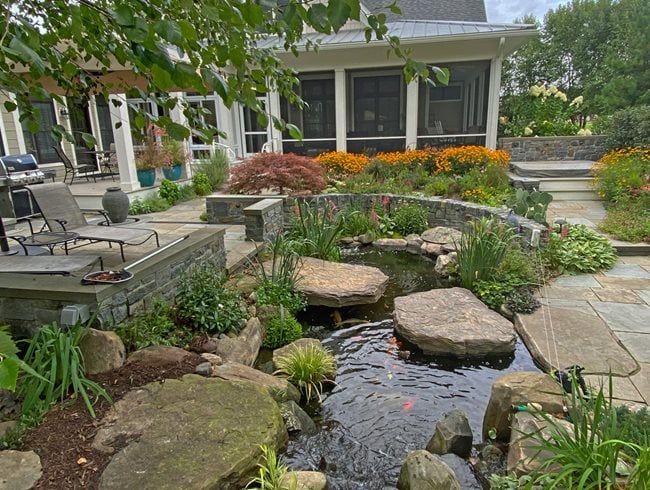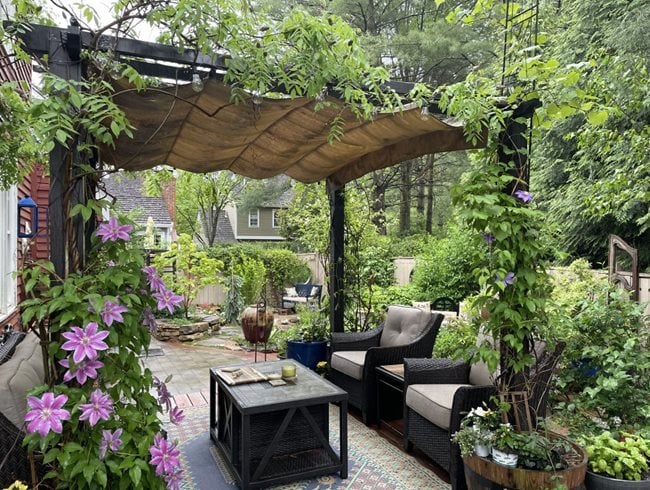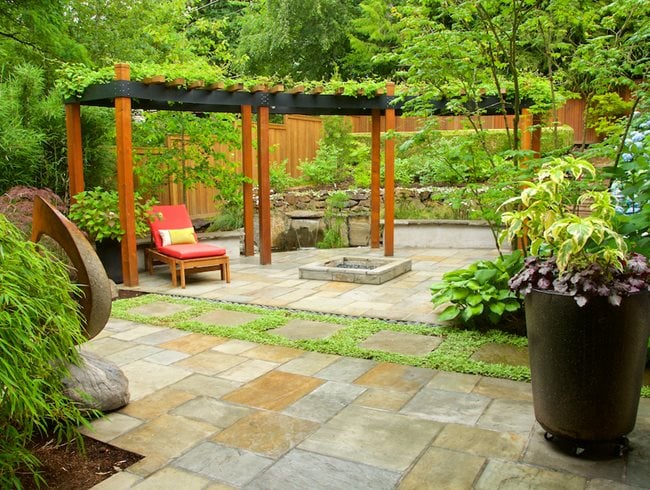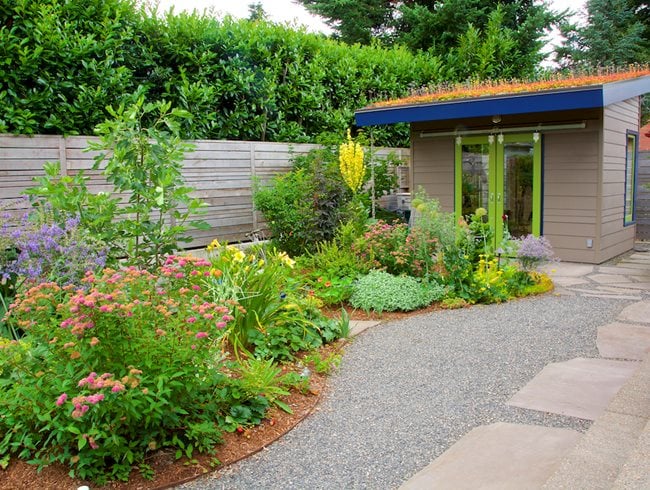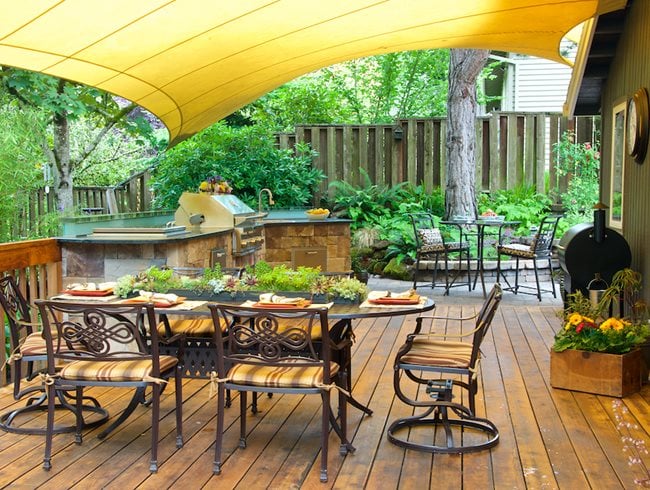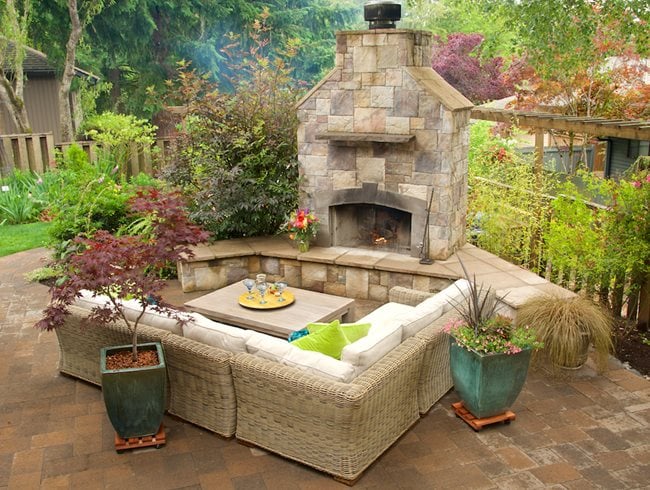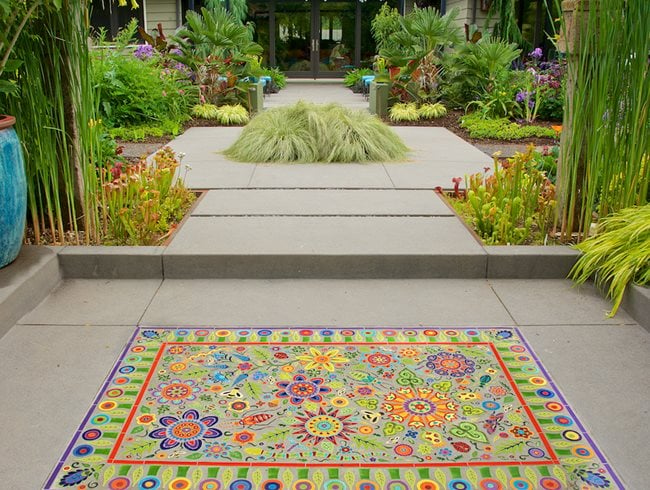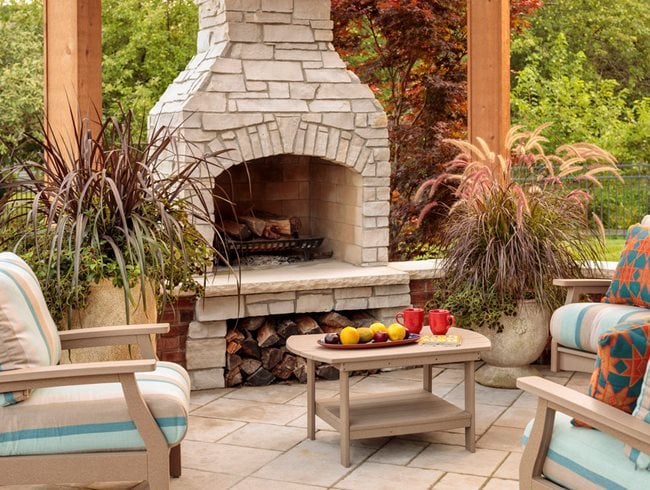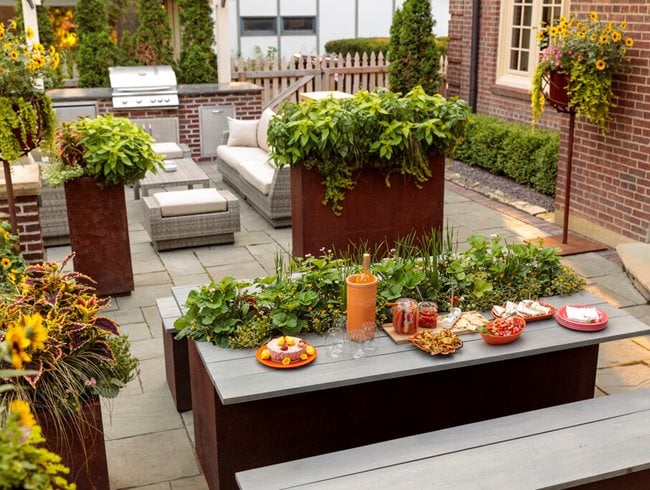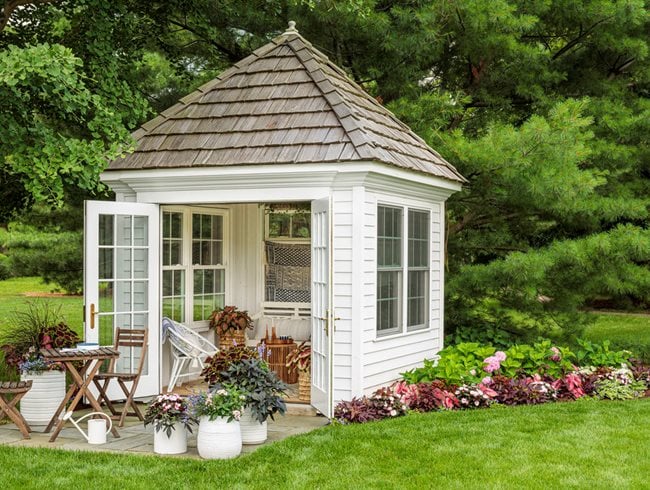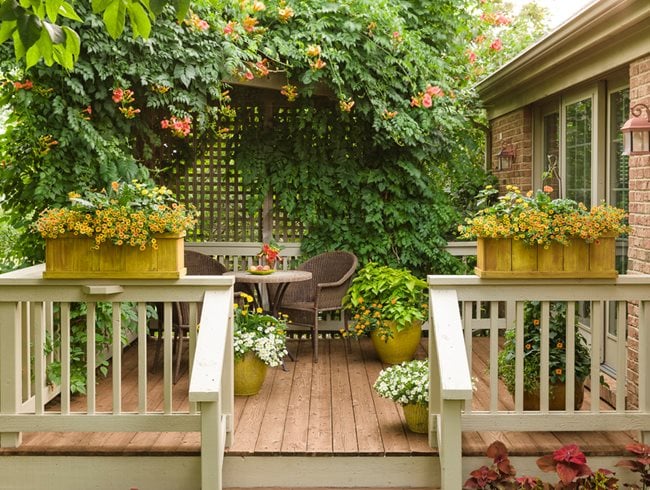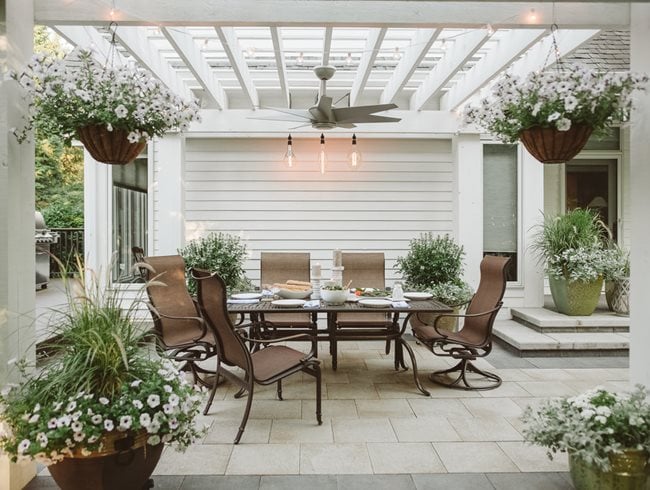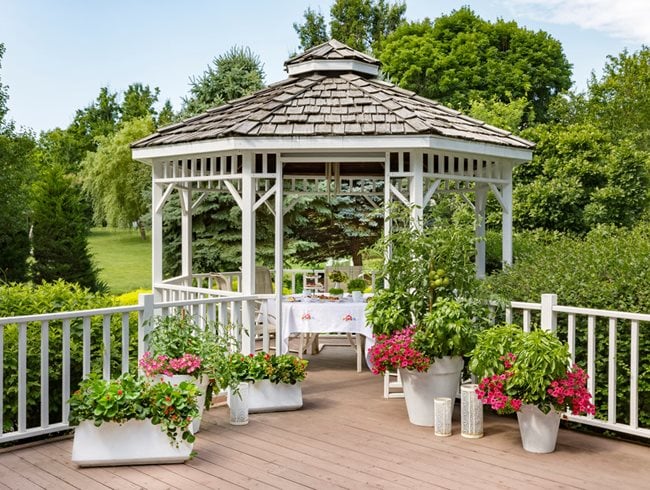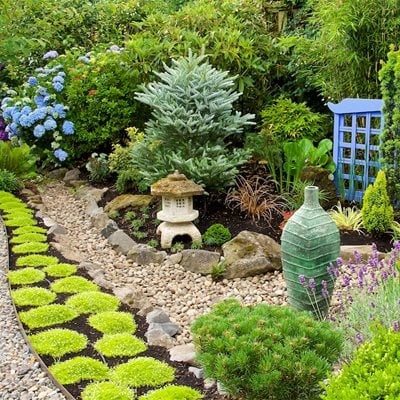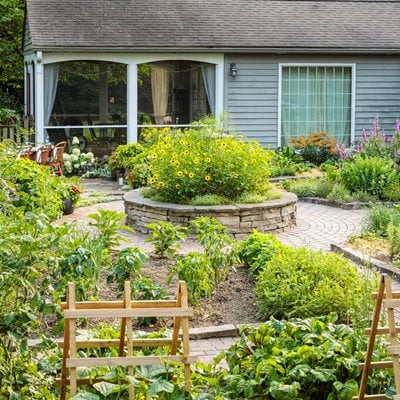The backyard is where most outdoor home activities happen, whether it’s play time for kids, a family barbecue, or quiet time with a good book. Unlike traditional landscapes of the past, the backyard has become an outdoor space that’s an extension of the home.
It’s safe to say that most backyards could use an upgrade as part of any home improvement project, whether they are minor DIY changes or a complete renovation with the help of a landscape design professional. You don’t need a big backyard to make substantial improvements. Even a small urban yard can be transformed into an inviting space where you can maximize enjoyment of your time outdoors. Here are some basic backyard design principles, along with design ideas to get you started.
PLANNING YOUR BACKYARD LIVING SPACE
Evaluate your site.
- How much space do you have? Measure your backyard to get a more accurate idea.
- Is your yard level, sloped, or irregularly shaped?
- What are your existing foundation trees and shrubs, and will you incorporate them into a new design or remove them?
- How does light fall during different parts of the day and throughout the seasons? This will help determine plant choice and how to use the space.
Consider function. How do you want to use your backyard space? Do you want a play area for children, a place to prepare food, a dining patio, quiet seating area for reading and meditation, dog run, swimming pool, water feature, fire pit, or vegetable garden? Prioritize the activities you are most likely to engage in and allow room for ornamental plantings.
Consider privacy. Small urban lots tend to have more privacy issues than larger suburban properties.
- Does your neighbor’s second story window look down into your backyard?
- Is there an unsightly view that needs screening?
- Is your backyard enclosed by a fence or hedging?
See more ideas on designing for privacy.
Divide the backyard into garden rooms. Creating separate areas for different functions will make a backyard feel larger. Connect rooms with pathways or transition areas and use hedging, containers, plant groupings, fencing, or lattice to screen garden rooms. The separation can be solid or semi-open to allow light and glimpses into the adjacent space. Read more about how to design garden rooms.
Get inspired. Peruse the internet and visit local gardens for ideas. Make a list of attributes you like, such as a patio, fencing, hardscape materials, plants, outdoor kitchen, or furniture.
Consider scale. Larger suburban properties will have different considerations than small backyards. Choose a bistro set or love seat for a smaller space rather than a full-sized dining ensemble or couch sectional. Stepping stones may be more suitable for a pathway than a full-sized sidewalk. If you have a tiny yard, you may not have room for a pond, but you can still add a water feature such as a birdbath or tabletop fountain. Allow enough room for plants to reach their mature size and use dwarf varieties for smaller areas.
Choose a style. Pick hardscape, furnishings and plants that will complement your home’s facade. A contemporary fireplace or couch sectional will complement a modern style home, while a fire pit and Adirondack-style furniture are more suited to a bungalow or rustic cabin.
Draw a design. Make a rough sketch and formulate a basic plan. For more elaborate projects, consult a landscape professional to create a garden design.
Budget. The cost of a major backyard upgrade can be substantial, and should be determined ahead of time. Get more than one opinion and consider less costly options for hardscaping and furnishings without sacrificing quality. Renovations can be done in stages to spread out costs over time.
PLANTING AND CARING FOR YOUR BACKYARD LANDSCAPE
Mainenance. Consider how much time you’re willing and able to devote to maintaining your backyard landscape. Certain hardscape materials, furnishings, and plants are easier to maintain than others. If you have an elaborate landscape, you may want to hire outside help for mowing, weeding, or other garden chores.
DESIGN CONSIDERATIONS
Consider flow. Make sure dining areas have enough room around the seating for people to get in and out of their chairs and comfortably move about. Allow enough space on pathways to walk without being cramped. Connect outdoor rooms with transition areas, whether it’s a pathway, landing, or arbor.
Place dining and cooking areas near the indoor kitchen to facilitate transport of food and beverages. Lesser trafficked areas such as a reading nook or meditation spot can be sited further away from the home, which will also encourage you to spend time in different parts of the yard. Provide access between the back and front yard.
Durability. Select the best materials you can for the budget you can afford. For components such as outdoor furniture, it’s more cost effective in the long run to pay more for a high-quality durable piece than it is to replace it every few years.
Vary and layer plantings. Use a combination of trees, shrubs, perennials, and groundcovers in different sizes, shapes, and heights to soften hardscape and create privacy. Birds and other wildlife will find layered plantings more appealing for shelter and nesting.
Go vertical. Maximize the use of a smaller space by going vertical. Trellises and arbors provide structure, while vining or trailing plants add a living component. Vines can be used as privacy screening or to hide an unsightly fence or wall, while trailing plants can be displayed in hanging baskets and window boxes. Learn more about vertical gardening.
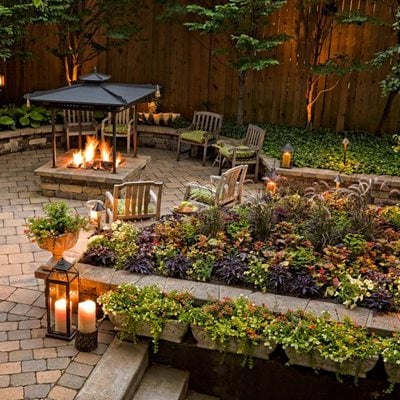
Provide lighting. Add lighting to extend your time outdoors during warmer weather. Provide pathway, porch, and patio lighting for safety and uplighting on trees, statuary, or structures for ambiance. Find out more about outdoor lighting.
Add containers. Use pots, hanging baskets, and window boxes to display plants. A decorative pot can be used as a focal point at the end of a pathway. Planted containers on a deck or patio add a living touch. Decorate a back porch or patio with hanging baskets filled with colorful annuals. Read more on container gardening.
Safety factors.
- Make sure porch steps don’t have loose boards or exposed nails.
- When installing stepping stones or other pavers, ensure they are level and don’t have exposed edges you could trip on.
- Keep walking surfaces such as stairs, pathways, patios, and decks free of moss or pooling water that could cause you to lose your footing.
- Illuminate walking areas at night.
Finishing touches. Don’t forget the accessories that bring a garden to life. These can include statuary, fountains, bird baths, rain chains, wall art, trellises, stonework, or mosaics. Give your yard a unique look and support local artists by adding customized pieces.
BACKYARD LANDSCAPING IDEAS & INSPIRATION
